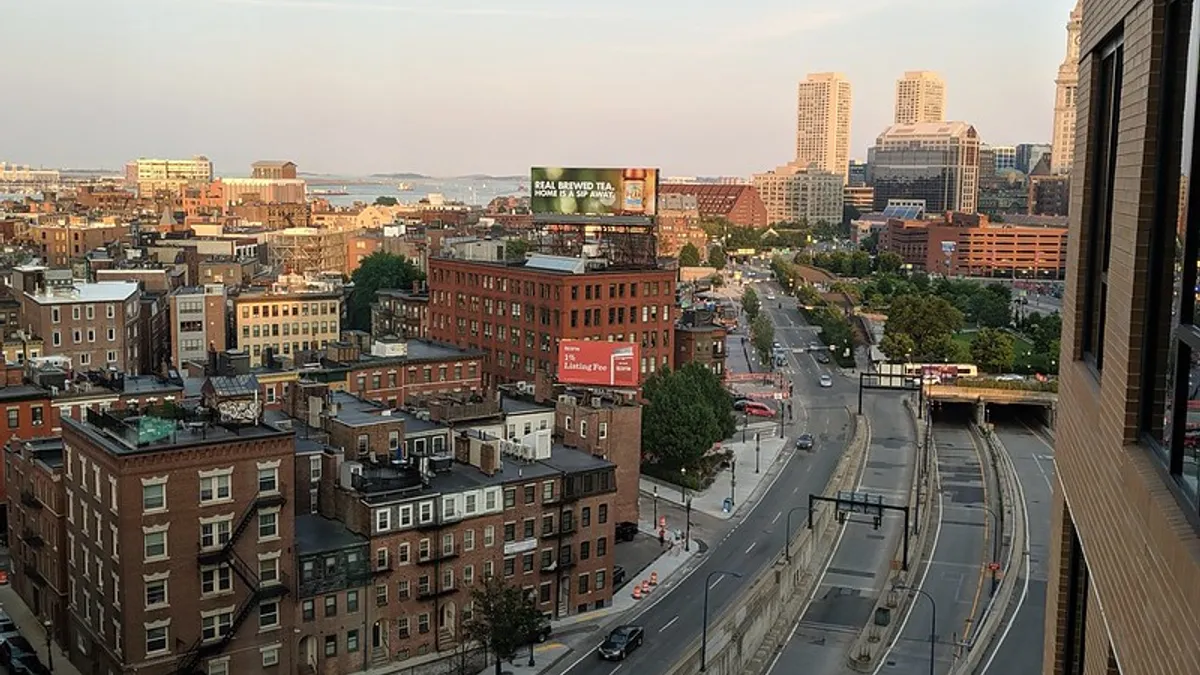Dive Brief:
-
Residents of color in the Greater Boston area are more likely to live near high-polluting roads, according to a new study by the Metropolitan Area Planning Council (MAPC).
-
Forty-five percent of the region's Black residents, 47% of Asian residents, and 54% of Latino residents live in areas with the highest rates of pollution, compared to just 29% of White residents.
-
The study evaluated the volume, speed and types of fleets on a roadway in a certain area, the length that residents travel to that roadway and the proximity of other high-emitting roadways. The study used this data to determine each area's "Pollution Proximity Index," assigning a ranking of one through five with five representing the "highest 20 percent of emissions intensity values."
Dive Insight:
The results are significant as residents who live close to roadways are more likely to have issues with health and lung diseases, which have been linked to higher rates of death among individuals that have contracted the novel coronavirus disease (COVID-19).
"We weren't particularly surprised to find this, but what it emphasizes is that these particular populations are subject to these persistent entrenched inequities in exposure to these pollutants that are causing pretty serious problems," Conor Gately, report author and MAPC senior land use and transportation analyst, told Smart Cities Dive.
The report outlines a number of "small-scale and systemic" policy solutions to address the disparity in Boston resident’s exposure to air pollution. Some of those include enhancements to the following areas:
- Buildings: Existing buildings can be improved with actions like moving ventilation system air intakes to locations safeguarded from road emissions, air filtration systems and soundproofing. New buildings constructed near busy roadways should also have air filters that ensure proper protection and include a long-term plan for upkeep.
-
Affordable housing: Boston should expand its access to affordable housing away from highly polluted areas of the city.
-
Traffic management: Boston can adopt solutions to improve intersection flow and cut back on local truck traffic. Diesel vehicles moving at slow speeds and accelerating in stop-and-go traffic are the main culprit, Gately said.
-
Urban design: Smart placement of parks, playgrounds, schools and other new construction should occur away from those high-pollution roadways. Cities can also install sound barriers to highways.
-
Large-scale, systemic change: On a large scale, the city should continue addressing the rate of gas-powered single-occupancy vehicle fleets on its roads by improving bike and pedestrian infrastructure, promoting public transit and cleaner modes of transit, and adopting electrification policies.
COVID-19 has highlighted the environmental inequities faced by people of color across the country, including in Chicago. In April, 52% of Chicago's positive COVID-19 cases and 72% of COVID-19 deaths were among the city's Black residents — despite representing just 30% of the city’s population.
Chicago's Black residents are more susceptible to the disease due to pre-existing conditions, exacerbated by neighborhoods that have experienced years of disinvestment, with lower quality access to healthcare, transit and green space. The city recently appointed a new chief sustainability officer who will marry the city's sustainability goals with racial equity goals.
"Racial inequities and exposure to pollution… have been a persistent problem in many of our urban areas," Gately said. "This is an opportunity to remind people what the stakes are, that it's not just a general slow-burning kind of thing, these kinds of inequities can lead to acute health conditions and COVID-19 really underscored the vulnerability of these populations."












